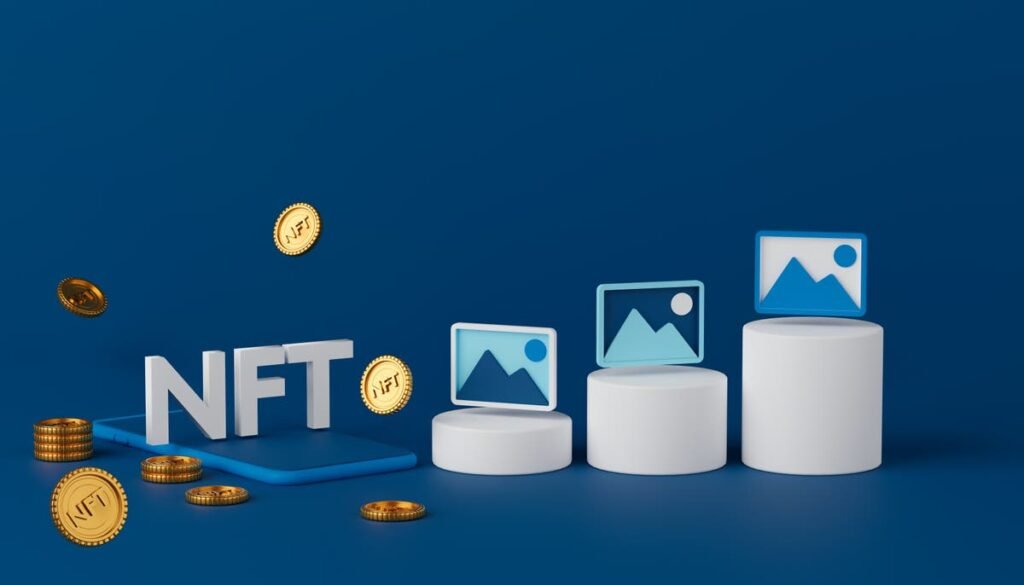Paiblock is a Business Reporter client.
The art market has long been a thing of intrigue. Blind auctions, paintings going for tens of millions of pounds, theft and forgery, maverick trading – it is the stuff of Hollywood thrillers. It is also often dismissed as elitist, and inaccessible to those of modest means – a plaything of the very wealthy who can spend vast amounts of money on artworks they seldom put on display in their own homes.
But like all markets it is forever evolving. In terms of impact and scale of transformation, the latest phase might well be the most profound since the rise of auction houses in the 18th century: the growth of digital art and the technology for buying and selling that supports it.
Digital art as a concept is fairly simple: it is art made using digital tools that exists, for the most part, on a digital platform. The technology supporting the digital art market is slightly more complicated. Central to it are NFTs, or non-fungible tokens. Digital artworks are printed onto blockchain technology in the form of NFTs, a process known as “minting”. In turn, these NFTs provide indelible proof of ownership. NFTs can’t be stolen, forged or tampered with, and they mean that the digital artwork can be traded in a cryptographically secure manner. In other words, unlike a Rembrandt hanging on the wall of a gallery or stately home, these works simply cannot be snatched and funneled through the black market.
The rise of digital art and NFTs has already brought fame to, and made millionaires of, artists who until recently had only online fanbases. In March this year, an NFT artwork by the artist Beeple – real name Mike Winkelmann – sold at Christies, for long the trading ground of canvases from the likes of Matisse and Van Gogh, for $69 million. It made him the third most expensive living artist at auction, behind David Hockney and Jeff Koons.
But the work, Everydays – The First 5000 Days – a composite of 5,000 digital images Beeple had made since 2007 – had a unique story. It was the first digital artwork to be sold at a traditional auction house. The sum didn’t merely reflect a new artist finding his stride; it was the moment a wholly new medium of art went under the hammer.
Check the small print below the Christies listing, and you’ll see details about the “wallet address” and the “non-fungible token”. No piece of art sold at Christies had carried these details before, and it has led many to ask if digital art, and the crypto-technology that supports it, will one day displace the physical canvas at the centre of the art market.
Digital futures
Works such as the Beeple one aren’t the only style to have gained hefty prices. Memes have also been minted and sold for tens of thousands. The CryptoPunks, a collection of 10,000 digital cartoon-like characters stored on the Ethereum blockchain, all of which are unique, started out in 2017 at between $1 and $34 a piece. One of them sold in July for $7.5 million; last year, the average price stood at $207,211.
Digital art functions much like physical art in that public perception is a key driving force behind the monetary value of a work. But when it comes to a piece that is part of a collection, such as CryptoPunks, the value is also influenced by how many people are buying and selling.
One thing that has speculators looking closer at the digital art world is the fact that the price appreciation of some of the best-known digital artworks is likely to have been faster than any other piece of art in recorded history. With the explosion in recent years of virtual wealth – thanks to the popularity of bitcoin, Ethereum and others, which have limited use outside of digital trading – it is now a buyer’s market.
Central to the whole process for the artists themselves is the ability to mint their work – to turn it into an NFT. Since starting out a decade ago, Paiblock, based in Denmark, has provided among the most affordable minting services in the industry. Using Paiblock’s own blockchain platform, an artist can mint 900 works for just $1. Moreover, the company takes commission only if the work ends up selling. If they don’t sell then, save for the low cost of minting, the artist doesn’t lose anything.
Democratising the art market
Part of the appeal of digital art, especially among younger generations, is the ease of accessibility. Prospective buyers don’t have to enter galleries or auction houses. And while they may not have the original artwork to hang on their walls, the extent of online engagement among Gen X, Y and Z-ers means that this appears not to be a deterrent. Paiblock hosts two sets of collectibles itself: CryptoPops and CryptoPandas. Like CryptoPunks, which many consider to have launched the cryptoart movement, these are uniquely generated characters that can be owned by an individual or company – and like any art, they function as either a collector’s item or a commodity for trade.
Younger generations understand better than many that online assets, for all their virtues, aren’t always dependable targets for investment. If properly minted, however, NFTs are highly secure, and Paiblock operates one of the most robust and easy-to-use digital environments that exists for minting.
It is platforms such as Paiblock that are helping to democratise the art space – to make artwork accessible to all, and, potentially, available to all.
For more information visit www.paiblock.app
Originally published on Business Reporter

